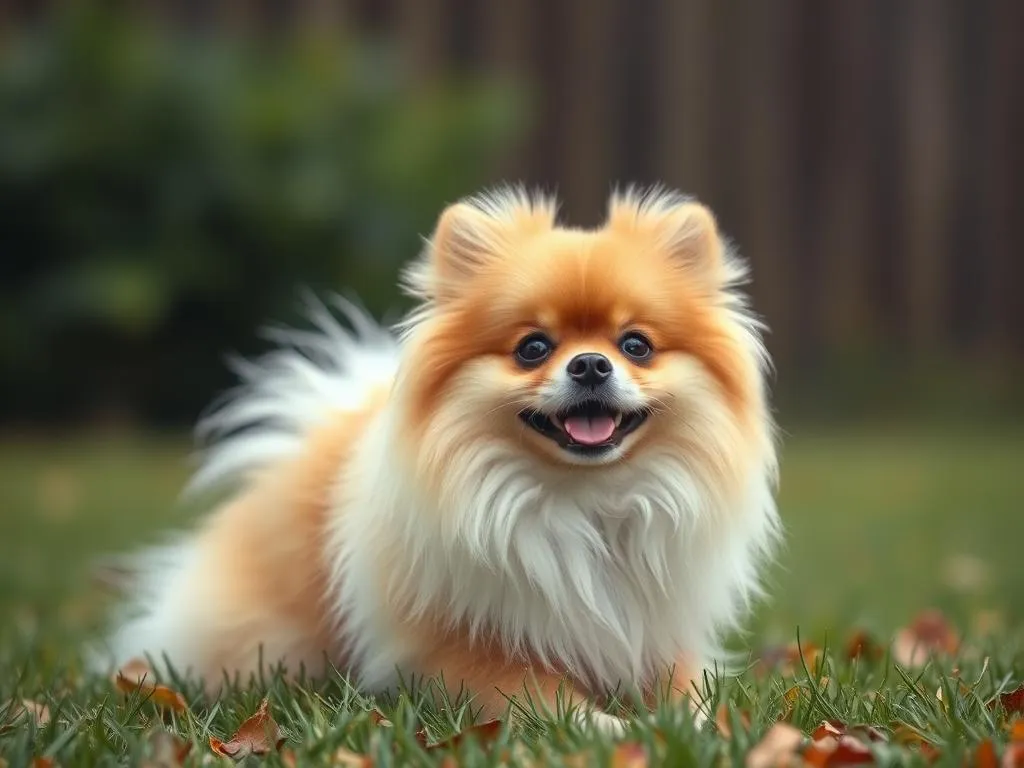
Introduction
Pomeranians are one of the most beloved dog breeds, known for their fluffy coats and vibrant personalities. Their small size and playful nature make them a popular choice among dog owners, but their spirited characteristics can also pose challenges in training. Understanding how to train a Pomeranian effectively is crucial for any owner who wants to ensure their furry friend is well-behaved, socialized, and a joy to be around.
Training a Pomeranian is not just about teaching commands; it’s an essential part of managing their behavior, fostering socialization, and strengthening the bond between owner and pet. In this article, you’ll discover everything you need to know about training a Pomeranian, from understanding their unique behavior to advanced training techniques that can enhance their skills.
Understanding Pomeranian Behavior
Breed Characteristics
Pomeranians are small dogs, typically weighing between 3 to 7 pounds, with a distinctive fluffy double coat. Their lively and curious temperament can make them quite entertaining, but it also means they can be stubborn and independent. Common behaviors of Pomeranians include a strong desire for attention, a tendency to bark at strangers, and a playful attitude that often leads to spirited antics. Understanding these traits is vital when approaching training.
Importance of Early Socialization
Socialization is the process of exposing your Pomeranian to various environments, people, and other animals. Early socialization is crucial for Pomeranians as it helps them develop into well-adjusted adults. A lack of socialization can lead to fearfulness or aggressive behaviors later in life. Here are some tips for effective socialization:
- Introduce New Environments: Take your Pomeranian to parks, pet-friendly cafes, and busy streets.
- Meet Different People: Encourage interactions with various individuals, including children and elderly people.
- Play with Other Pets: Arrange playdates with other dogs to help them learn social cues.
Preparing for Training
Essential Training Tools
Before you begin training your Pomeranian, it’s important to gather the right tools. Here are some essentials:
- Leash and Collar: A standard leash and collar will help you maintain control during walks.
- Treats: Use high-quality, small treats that your Pomeranian loves for effective positive reinforcement.
- Clicker: A clicker can help mark desired behaviors and is an excellent tool for training.
Investing in quality products can make a significant difference in your training experience.
Setting Up a Training Space
Creating a distraction-free training environment is essential. Choose a quiet area in your home where your Pomeranian feels comfortable. Consistency is also crucial, so try to use the same location for each training session. This helps your dog associate that space with learning.
Establishing a Training Schedule
Routine is vital when training a Pomeranian. Aim for short, frequent training sessions lasting about 5-10 minutes, several times a day. Consistency in timing helps establish a routine that your dog can anticipate, making training smoother and more effective.
Basic Commands and Techniques
Teaching “Sit”
One of the first commands you should teach your Pomeranian is “sit.” Here’s how to do it:
- Get your dog’s attention: Hold a treat close to their nose.
- Move your hand up: Allow their head to follow the treat, which will naturally cause their bottom to lower.
- Say “Sit”: Once they are in the sitting position, say the command and give the treat.
Common Mistakes: Avoid using too much force or pushing down on their bottom, as this can create negative associations with the command.
Teaching “Stay”
Teaching “stay” is essential for keeping your Pomeranian safe. Follow these steps:
- Ask them to sit: Start with your dog in a sitting position.
- Open your hand: Show your palm and say “stay” as you take a step back.
- Reward them: If they stay, praise them and offer a treat.
Patience is Key: Gradually increase the distance and duration of the “stay” command. Always reward them for staying in place.
Teaching “Come”
The “come” command is crucial for recall. Here’s how to teach it:
- Start in a quiet area: Call your dog’s name followed by “come.”
- Use treats: Hold a treat and back away slightly to encourage them to follow you.
- Praise and reward: When they come to you, praise them and give them the treat.
Make it Fun: Incorporate games like hide-and-seek to make the command more appealing and engaging.
Teaching “Down”
The “down” command can help your Pomeranian settle down. Here’s a step-by-step guide:
- Start with a treat: Hold a treat close to their nose.
- Move the treat down: Slowly lower it to the ground. Their body should follow.
- Say “down”: Once they are lying down, reward them with the treat.
Troubleshooting: If they jump up instead, try practicing “sit” first, then proceed to the “down” command.
Advanced Training Techniques
Clicker Training
Clicker training is a positive reinforcement method that utilizes a clicker to mark desired behaviors. Here’s how to implement it:
- Introduce the clicker: Click the clicker and immediately give a treat.
- Repeat: Do this several times until your Pomeranian associates the click with a reward.
- Use the clicker during training: Click when they follow commands correctly and reward them.
Benefits: Clicker training helps with precise timing and can encourage your dog to repeat good behavior.
Leash Training
Teaching your Pomeranian proper leash manners will make walks more enjoyable. Here’s how to do it:
- Choose the right equipment: Use a standard leash and collar. Harnesses can also be effective for small breeds.
- Practice walking: Start with a short leash. If they pull, stop walking until they return to your side.
- Reward calm behavior: When they walk beside you, praise and reward them.
House Training
House training is one of the first challenges new dog owners face. Here are effective strategies:
- Create a Schedule: Take your Pomeranian outside after meals, playtime, or naps.
- Use a designated spot: Take them to the same spot outdoors to establish a routine.
- Praise and reward: Always praise them when they relieve themselves outside.
Avoid Common Pitfalls: Never scold them for accidents inside; instead, clean up and reinforce outdoor potty breaks with positive reinforcement.
Addressing Behavioral Issues
Barking
Pomeranians are known for their vocal nature, which can sometimes lead to excessive barking. Common reasons include boredom, fear, or a desire for attention. Here’s how to manage barking:
- Identify triggers: Observe when your dog barks to understand the cause.
- Redirect attention: Use toys or training commands to distract them when they start barking.
- Teach “quiet”: Reward them when they stop barking on command.
Separation Anxiety
Pomeranians can develop separation anxiety, leading to destructive behavior. Signs include excessive barking, whining, or chewing. To alleviate anxiety:
- Practice short departures: Leave your Pomeranian alone for short periods and gradually increase the time.
- Create a safe space: Provide a cozy area with toys and comfort items.
- Stay calm: When leaving or returning home, keep departures and arrivals low-key to minimize anxiety.
Aggression and Fearfulness
If your Pomeranian shows signs of aggression or fear, it’s essential to address it promptly:
- Identify triggers: Keep a journal of situations that provoke aggressive behavior.
- Desensitize: Gradually expose them to their triggers in a controlled manner.
- Seek professional help: If aggressive behavior persists, consulting a certified dog trainer may be necessary.
Maintaining Training Consistency
Daily Reinforcement
Reinforcing commands daily is crucial for retention. Incorporate training into your daily routine by:
- Using commands during play: Ask your Pomeranian to “sit” or “stay” before playtime.
- Offering treats for good behavior: Reward them when they follow commands or display desired behaviors.
- Encouraging participation: Involve family members in training to maintain consistency.
Positive Reinforcement
Positive reinforcement is vital in training Pomeranians. This method encourages desired behaviors through rewards. Here are some effective rewards:
- Treats: Use their favorite snacks as motivation.
- Praise: Verbal praises and affectionate petting can be just as rewarding.
- Playtime: Incorporate play sessions as a reward for good behavior.
Enrichment and Ongoing Learning
The Importance of Mental Stimulation
Pomeranians thrive on mental stimulation. Keeping them engaged through enrichment activities is vital. Here are some ideas:
- Puzzle toys: These can challenge their problem-solving skills.
- Interactive games: Hide-and-seek or fetch can provide physical and mental exercise.
- Training new tricks: Regularly teaching new commands can keep them mentally sharp.
Continuing Education
Training shouldn’t stop once your Pomeranian learns basic commands. Continuing education is essential. Consider:
- Advanced training courses: Look for local classes that offer advanced skills and socialization opportunities.
- Learning tricks: Teaching fun tricks like “roll over” or “play dead” can strengthen your bond and keep things interesting.
Conclusion
Training a Pomeranian requires patience, consistency, and understanding of their unique behavior and needs. By focusing on essential commands, addressing behavioral issues, and incorporating ongoing learning, you can foster a well-behaved and happy companion. Remember to enjoy the training process and celebrate small victories along the way. Every step in training is a step toward a stronger bond with your furry friend!









